Your call center handles hundreds, maybe thousands, of customer interactions and conversations every day. Each one carries valuable information in the form of customer feedback, frustrations, and opportunities. But how much do you really know about what’s being said in those calls?
For most call center managers, the answer is “not enough.” Manually reviewing calls is a slow, tedious process, meaning you’re only ever getting a tiny snapshot of the full picture. The rest of that valuable data — the real reasons for customer churn, the hidden agent coaching opportunities, agent performance feedback, and valuable insights from product feedback — is lost in a sea of unanalyzed call recordings.
What if you could listen to every call without actually having to listen to every call? That’s where call center speech analytics comes in. It’s the AI-powered solution that automatically analyzes calls in your call center, turning conversations and spoken words into customer intelligence.
What Is Call Center Speech Analytics?
Call center speech analytics, also commonly known as voice analytics, uses artificial intelligence (AI) to understand human language and automatically analyze recorded customer calls, transforming spoken conversations into structured, actionable data.
Using speech analytics in a call center environment helps call center managers and supervisors overcome the limitations of manual review and enhance agent performance evaluations. Instead of random call sampling, where they can only listen to a small portion of customer interactions, they get a complete, unbiased understanding of what’s happening on the front lines.
Systematically analyzing customer conversations provides call centers with actionable and deep insights to improve agent performance and increase operational efficiency.
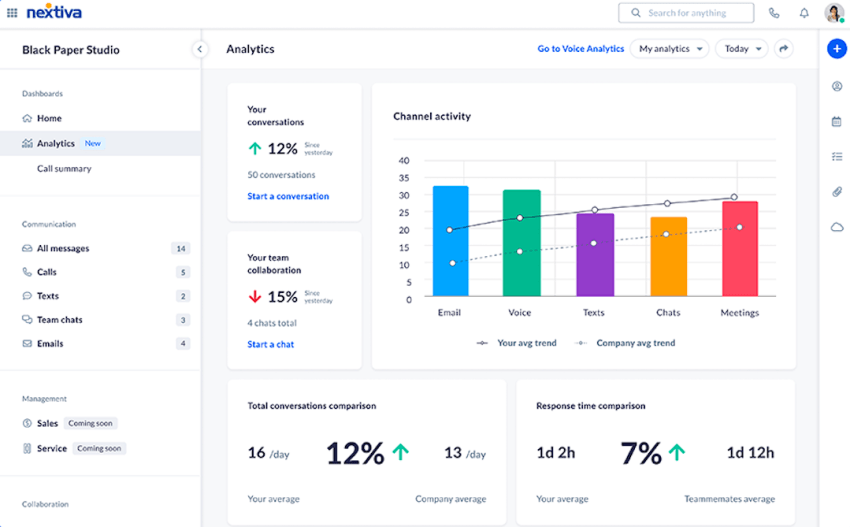
Speech Analytics vs. Voice Analytics: Is There a Difference?
The terms speech analytics and voice analytics are used interchangeably, and that’s perfectly fine for most purposes. However, there’s a technical difference that makes it easier to understand the two terms.
- Speech analytics focuses on the “what” and the actual words spoken. The conversation is transcribed into text and then analyzed to identify keywords, themes, and intentions.
- Voice analytics focuses on the “how” and the acoustic and phonetic characteristics of the voice. Call center voice analytics software analyzes nonverbal cues such as pitch, tone, volume, and tempo to detect emotions such as stress, frustration, or contentment, regardless of the words used.
Most call center platforms don’t choose one or the other; they combine both voice and speech analytics. They use speech analytics to understand the voice interaction, what the customer is talking about, and voice analytics to understand how they feel about it. This combination is crucial because a customer might say, “That’s just fine,” but their frustrated tone of voice — detected by voice analytics — tells the real story about their customer concerns.
What Technologies Does Call Center Speech Analytics Use?
Speech analytics isn’t a single technology, but rather a combination of sophisticated processes working together. Its key components include:
Automatic speech recognition (ASR)
ASR converts spoken audio data into written text. It’s a highly accurate and fast system that creates a searchable digital recording of every customer call. The quality of this transcription forms the basis for all further analysis.
Natural language processing (NLP)
This is the “brain” of the operation. NLP is a field of artificial intelligence that enables computers to understand, interpret, and derive meaning from human language. During language analysis, it scans the transcribed text to identify keywords, categorize the topics discussed (e.g., “billing issue,” “technical issue”), and understand the customer’s intent.
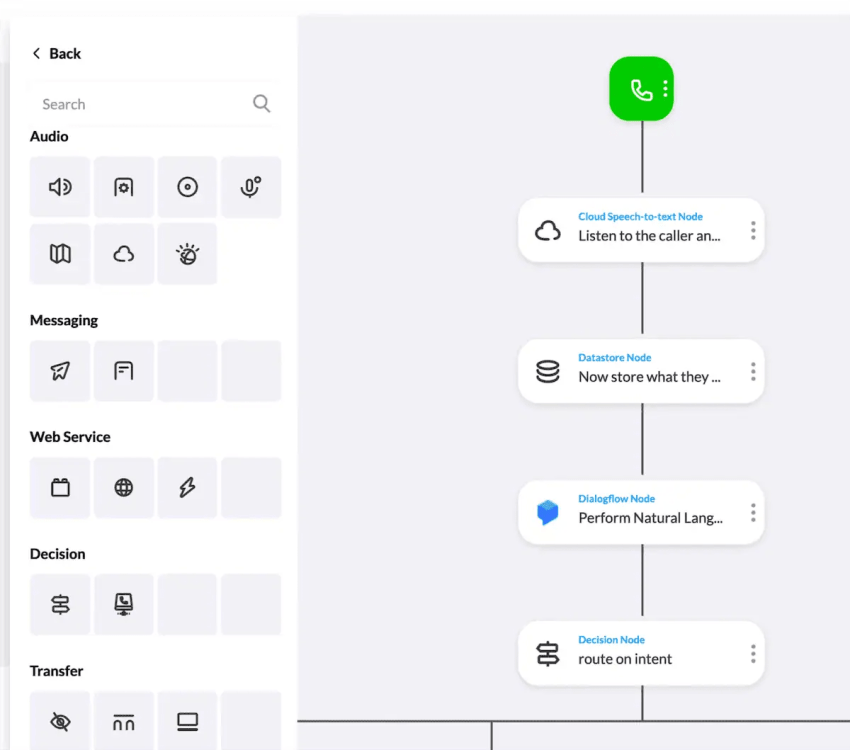
Acoustic and phonetic analysis
This technology focuses on how things are said, not just what is said. It analyzes the raw data for characteristics like tone, pitch, volume, and periods of silence. Acoustic analysis allows the system to accurately detect emotions like frustration, satisfaction, or confusion, providing insights that text alone cannot provide.
How Call Center Speech Analytics Works
Speech analytics follows a clear workflow in a call center, including the following four key steps:
1) Call capture and data ingestion
The speech analytics process begins with capturing audio recordings from your call center. This includes live calls currently in progress and can also process large backlogs of existing recordings. The quality of this initial audio recording is crucial, as higher fidelity ensures more accurate analysis of subsequent calls.

2) Transcription into structured data
Next, the raw audio is converted into structured, searchable text using automatic speech recognition. More than just a simple transcript, this step enriches the conversation data by attaching critical metadata; the agent and customer ID, call duration, and timestamp. The unstructured, spoken conversation now becomes a structured data record ready for deep analysis.
3) AI-powered speech and text analysis
Conversation analytics is the most important in the process, where AI algorithms perform dual analysis:
- Text analysis: NLP scans the transcript to identify and categorize keywords, topics, and customer intent. It answers the question: “What was said?”
- Audio analysis: At the same time, acoustic analysis examines the original audio file for emotional cues. It measures tone, pitch, and silence to understand the emotional state of the speakers. This answers the question: “How was it said?”
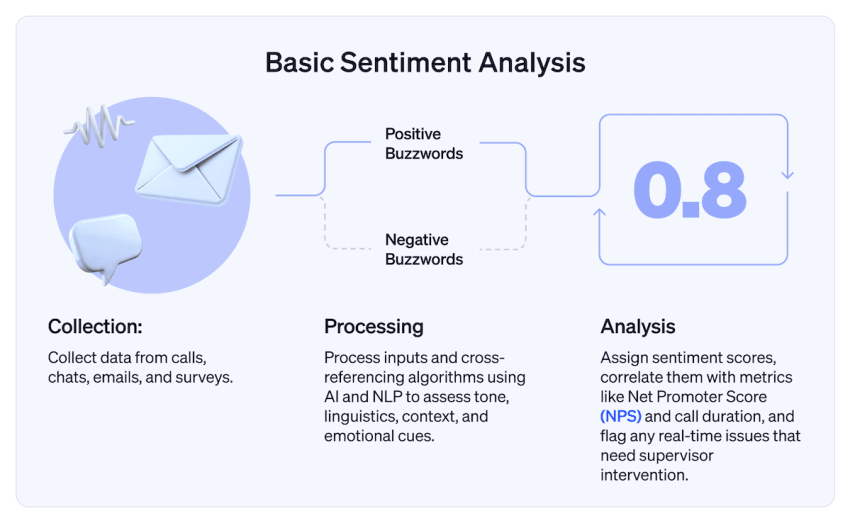
4) Delivery of clean customer intelligence
Finally, speech analytics software translates its results into clean information, delivered in formats tailored to the various roles within the call center:
- Real-time alerts for supervisors can intervene on high-risk calls (e.g., churn risk, compliance violations).
- Agent dashboards provide performance feedback and highlight coaching opportunities.
- Executive reports summarize key trends, causes of customer dissatisfaction, and key operational metrics.
What Information Do You Get From Using Speech Analytics in a Call Center?
Speech analytics combines different AI technologies to provide a layered view of customer interactions and track important information. Through speech analytics, you uncover:
- Customer sentiment and emotions: Speech analytics software objectively analyzes customer sentiment (positive, negative, neutral) throughout the call and identifies moments of high frustration or satisfaction.
- Key topics and emerging trends: It automatically identifies the most common reasons for calls. For example, it can alert you to a sudden increase in calls mentioning a “website outage” or a “new competitor offering.”
- Agent performance and script adherence: The process tracks whether agents are following required compliance scripts, using recommended empathy statements, effectively mentioning upsell opportunities, or interrupting customers too frequently.
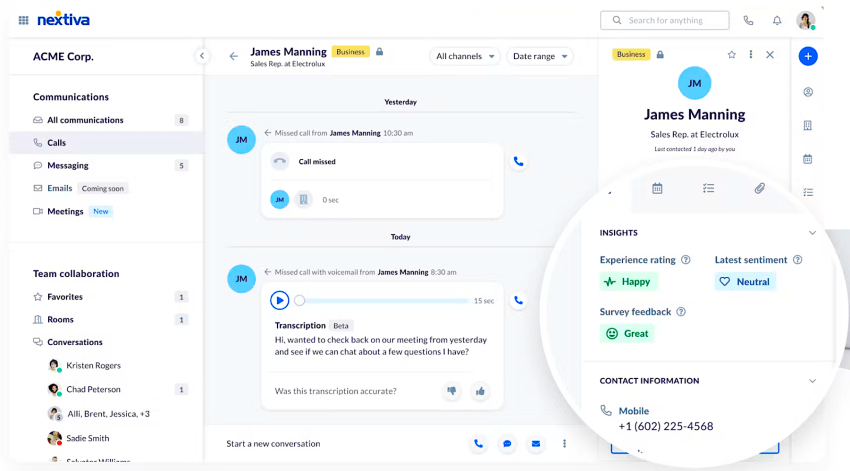
Benefits of Using Speech Analytics in Your Call Center
Why use speech analytics in your call center?
Improve agent performance with targeted coaching
Speech analytics automatically identifies the precise moments when your agents struggle or excel during calls. This lets you create data-driven, personalized coaching plans that address specific skill gaps, whether it’s empathy, product knowledge, or script adherence. This eliminates the need for random call sampling.
Enrich the customer experience (CX)
Analyzing customer calls helps uncover the root causes of customer frustration. Is a confusing IVR menu causing angry callers? Is a faulty process leading to repeat calls? Contact center speech analytics answers these questions and enables you to make data-driven decisions, systematic improvements that reduce customer effort and result in higher customer satisfaction scores.
Automate and improve quality assurance (QA)
Your QA team can’t listen to everything, but your call center software can enhance quality management. AI-powered speech analytics tools automatically analyze all calls for quality to optimize agent performance, not just the usual 1-2%. You can automate the evaluation of key criteria (e.g., “Did the agent use the correct greeting?”) and free up your QA team to focus on coaching agents instead of tedious manual listening.
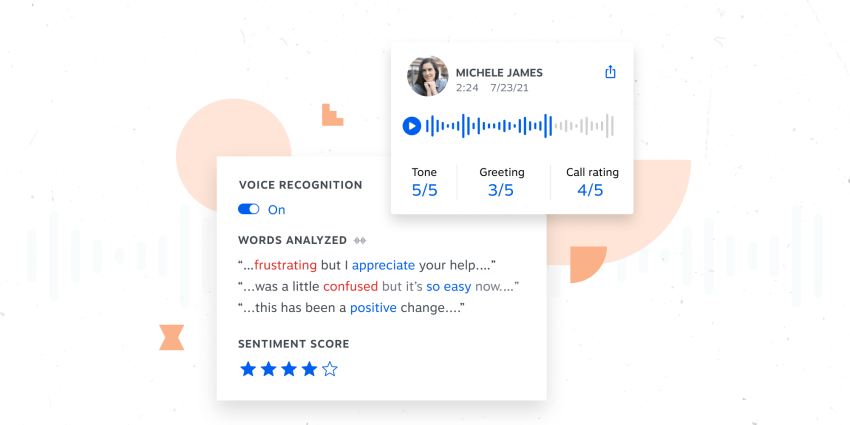
Reduce customer churn
Speech analytics can identify customer pain points and at-risk customers by detecting phrases like “I’m thinking about leaving” or frequent mentions of competitors, and assessing overall customer sentiment. These calls can be automatically flagged or routed to specialized customer retention teams who can save the relationship.
Ensure compliance and mitigate risk
In regulated industries, a single compliance error can be costly. Speech analytics solutions automatically check calls for compliance with mandated scripts (such as mini-Miranda statements) and industry regulations (PCI, HIPAA). Potential violations are immediately flagged for review, providing a powerful safety net for your business.

Use Cases for Call Center Speech Analytics
Besides high-level benefits, speech analytics software also offers concrete added value by solving specific, everyday call center challenges. Here are some of the most common and powerful ways call centers apply speech analytics platforms and analytics to their daily operations.
- Quality assurance: Go beyond sample analysis and analyze customer calls to get a complete and objective view of your agent performance. Automate the quality management process based on key criteria and identify specific coaching opportunities for each agent, not just a few.
- Root cause analysis: Identify the causes of high call volumes or frequent customer complaints. By identifying the root cause, for example, confusing billing or a bug in your app, you can address the root problem and reduce future calls.
- Product and service feedback: Automatically receive unstructured, open-ended feedback on your products and services. Create a direct feedback loop for your development and operations teams, providing them with the true voice of the customer.
- Competitive intelligence: Track and analyze competitor mentions, promotions, and pricing. Get real-time market insights directly from your customers’ perspective.
- Churn prediction: Identify patterns in language and sentiment as early warning signs of customer dissatisfaction, so your customer service teams can proactively engage with at-risk customers before they decide to churn.
- Agent script adherence: Automatically verify that your call center agents are following the required scripts and reading the mandatory disclosures. Create an audit trail and reduce compliance risk for your organization.
Top Speech Analytics Tools for Call Centers
The call center market offers many powerful and comprehensive platforms for speech analytics. However, focusing on key features, the best tool depends on your business needs and existing infrastructure. Here’s an overview of some of the best call center speech analytics software and their unique features.
- Nextiva: The best solution for businesses that need an all-in-one platform. It offers a unified communications, customer experience, and contact center solution with integrated AI-powered speech analytics, delivering insights into all interactions within a single ecosystem.
- CallMiner Eureka: Ideal for deep and comprehensive customer experience management and insights. It excels at root cause analysis and trend detection across different interaction types.
- NICE Nexidia: Good for call centers requiring advanced analytics and rigorous compliance monitoring. It’s known for its highly accurate acoustic and phonetic analysis.
- Verint Speech Analytics: Ideal for call centers focused on workforce optimization, as it directly links speech information to agent performance, scheduling, and training.
What To Look for in Call Center Speech Analytics Software
When evaluating different platforms, it’s easy to get lost in the feature lists. Focus on these key features to choose a tool that will add real value to your call center.
- Transcription accuracy: If the transcription is inaccurate, the analysis is unreliable. Look for a platform with high, proven accuracy.
- Real-time vs. post-call analytics: Real-time analytics enable immediate intervention and support for agents. Post-call analytics identify long-term trends, coaching opportunities, and root causes. A powerful speech analytics platform offers both.
- Ease of use and dashboards: Insights should be accessible to everyone, not just data scientists. Look for an intuitive interface with clear, customizable dashboards that allow line managers to identify trends at a glance.
- Customization and scalability: The software should allow you to define your own keywords, create custom call categories, and generate reports tailored to your call center KPIs. Make sure it can scale to handle growing call volumes.
- Integration capabilities: Check how well the platform integrates with your key business systems, especially your CRM. Comprehensive integration lets you directly link conversation insights to customer accounts and business results.
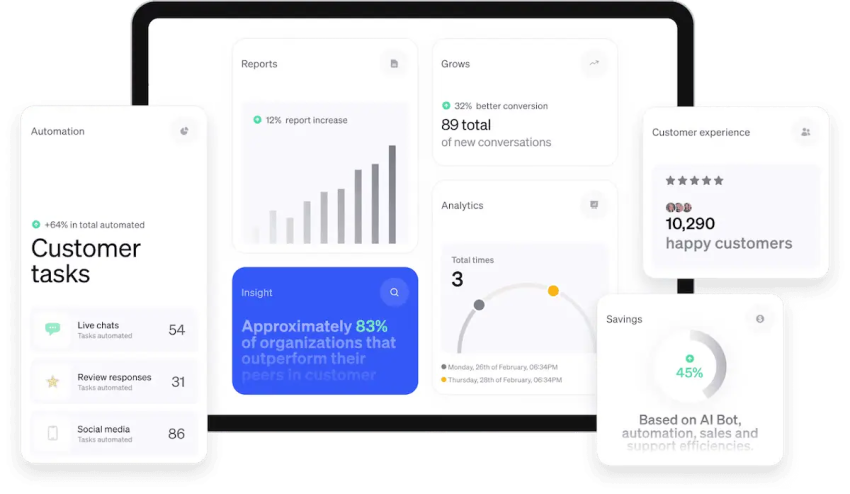
How To Implement Speech Analytics in Your Call Center
Successful call center speech analytics requires integrating a new information source and technology into your daily operations. Follow these steps to maximize the benefits of speech analytics right from the start.
1) Start with clear business goals
Recognize the specific problems you want speech analytics to solve. Focus on issues like long wait times, low first-call resolution, or compliance gaps. Set clear targets, such as reducing the average handle time by 15% or increasing the first-call resolution rate by 10%. Clear goals guide the project and prevent it from becoming a data collection exercise.
2) Choose the right platform
Select call center software that fits both your current needs and future growth. Compare platforms based on accuracy, reporting flexibility, and system integration. Concentrate on features like reliable speech recognition, natural language processing, and real-time alerts. Test demos or trials to confirm usability and performance before making a decision.
3) Integrate with your tech stack
Connect speech analytics smoothly with your call recording, CRM, and quality management systems. Ensure every customer interaction is captured for accurate insights. Test the integration thoroughly to confirm data flows evenly across platforms. A good setup allows managers to review results without juggling multiple tools.
4) Customize your analysis
Create keyword lists and categories that reflect your business objectives. Configure sentiment analysis to identify frustration or dissatisfaction. Set alerts for regulatory risks if your industry requires compliance monitoring. Customize the system to your goals to make insights actionable and relevant.
5) Train your team
Educate agents on how the system supports better conversations and performance. Teach supervisors to interpret reports and use them for coaching. Position the tool as a support system rather than a monitoring mechanism. When employees see clear benefits, they adopt the system and trust its purpose.
6) Act on the insights
Review reports regularly to spot trends and problem areas. Update call scripts or resources when customers ask the same questions repeatedly. Reinforce behaviors that lead to high satisfaction during training. Turn insights into process changes that enhance customer experience, workflow updates, or new training modules to maximize impact.
7) Keep refining
Review keywords, categories, and reports to match evolving objectives. Adapt to changes in customer language and business priorities. Collect feedback from supervisors and agents on which insights provide the most value. Treat refinement as an ongoing cycle to maintain system relevance and effectiveness.

Get the Most Out of Speech Analytics With Nextiva
Your call center isn’t a cost, it’s a source of business intelligence. Speech analytics powered by machine learning is the key to successful call center operations, transforming daily conversations from an underutilized resource into a valuable intelligence source of customer data.
But speech analytics is only one part of the comprehensive technology it encompasses: call center software. With intelligent contact center software like Nextiva, you can go beyond guessing to knowing. Use the data to coach agents more effectively, delight your customers with better experiences, and drive real, measurable business growth.
You’re already collecting data. Now it’s time to put it to use.
Ready to put your data to work?
Nextiva helps you deliver the best customer experience at scale.
Speech Analytics for Call Centers FAQs
Speech analytics software identifies the root causes of long support calls, such as agent knowledge gaps, inefficient processes, or confusing scripts, which can negatively impact business outcomes. This allows call centers to address customer issues directly.
Not anymore. Although originally developed for the enterprise sector, cloud-based solutions have made speech analytics accessible and affordable for call centers of all sizes. Platforms like Nextiva offer scalable pricing models that grow with your business.
With traditional call monitoring, a human manually listens to a small, random sample of calls (typically 1-2%). Speech analytics uses AI to automatically analyze all of your calls, providing a much more comprehensive and objective overview of performance and customer sentiment.
Yes, most leading speech analytics solutions support multiple languages and can even recognize different dialects, making them suitable for global call center operations.

















 Customer Experience
Customer Experience 









